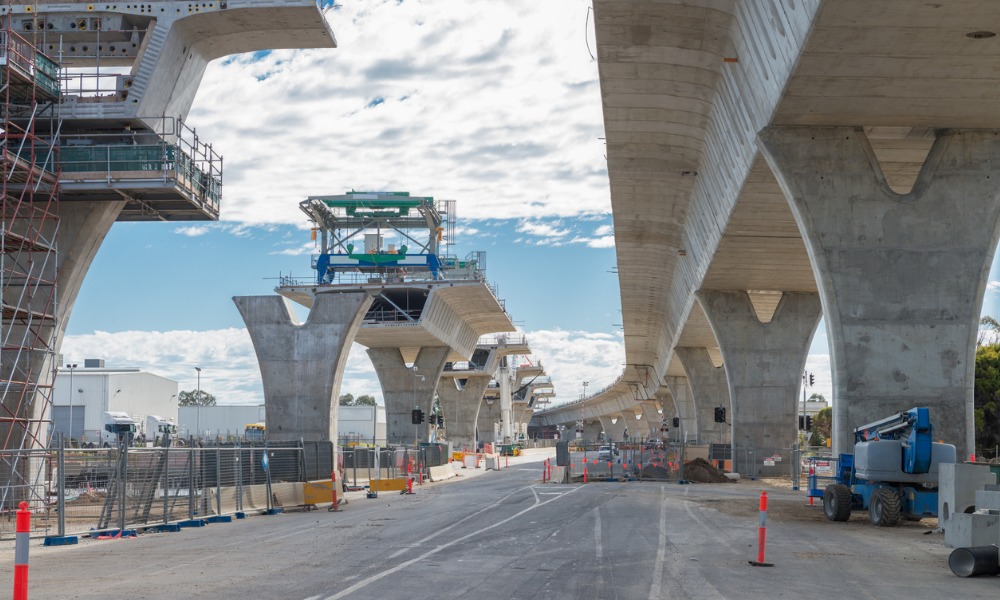Chief economist warns that long-term benefits will rely heavily of good execution and avoidance of "vanity projects"

The prospect of a bipartisan infrastructure bill in the U.S. will have many investors salivating at the potential for economic growth and job creation. The opportunity for portfolio gains seem within reach.
However, MacKenzie Investments chief economist Todd Mattina believes such excitement needs to be tempered. While a successful bill from the Democrats will likely scale up clean energy initiatives and broadband access – albeit in the face of opposition from fiscal conservatives - its success will depend on timely, on-budget execution and the avoidance of costly “vanity projects”.
“Getting new projects off the ground is often a slow and bureaucratic process, even once funding has been approved,” Mattina said. “High-quality projects need to be identified, prioritized, and implemented effectively.
“Public investment plans are often plagued by poor project selection, such as political vanity projects – ‘roads to nowhere’ – while project execution is also critical to achieve a rate of return that exceeds financing costs. An IMF study finds that advanced economies lose about 15% of returns on public investment to inefficiencies.
“Lags in selecting and implementing projects also make infrastructure spending an unreliable tool for macro stimulus. In 2009, the US $800 billion stimulus bill of President Obama banked on ‘shovel-ready’ projects to jumpstart the recovery.”
He added that the 2021 infrastructure bill could face even slower implementation, with non-traditional items making up a larger portion of Democratic proposals. It will also be at least partially financed through higher taxes, mainly aimed at corporations and wealthy individuals. This complicates the macro impact further, Mattina said.
“Higher corporate taxes, which lower the return to investment, discourage capital accumulation and could offset the desired ‘crowding in’ of private investment. Firms are also more highly leveraged after the pandemic, potentially limiting their ability to increase investment. And once approved, a tax increase can be implemented much faster than a large national infrastructure plan.”
In addition, Mattina warned that if the impact of new infrastructure on long-term growth disappoints, the U.S. debt-to-GDP ratio could deteriorate. This will mean government will have to raise taxes or cut spending further, setting a “bearish backdrop” for markets.
He said: “For all these reasons, scaled-up infrastructure spending may underwhelm currently high investor expectations. In 2016, markets reacted to Donald Trump’s surprise election by selling bonds, in part from the anticipation of a large infrastructure program. The spending never materialized. That episode could end up being a cautionary tale for President Biden’s turn on the infrastructure carousel.”
Nevertheless, there are powerful reasons to be optimistic. On paper at least, a multi-trillion infrastructure plan could be an incredibly powerful catalyst for growth, with both short- and long-term potential benefits. In the short term, public investment can create well-paid jobs and stimulate aggregate demand, especially in times of economic weakness, while in the longer term, it can boost productivity growth, especially when it improves on outdated or worn out infrastructure that is restraining economic activity.
Mattina explained: “In the U.S., where public investment in structures has decreased from 2.7% of GDP in 2002 to 1.7% of GDP in 2020 as per the Bureau of Economic Analysis, a public infrastructure upgrade could be a welcome nudge to long-term growth. On top of that, public investment can ‘crowd in’ higher private investment.
“This is especially true in periods of greater uncertainty when public investment can act as a coordinating force. International Monetary Fund (IMF) research suggests that in uncertain times, increasing public investment by 1% of GDP can spur a 10% rise in private investment. But in practice, the macro impact of infrastructure programs could be disappointing without strong execution.”



